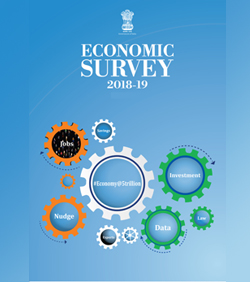BANKS
RBI fails to identify ever-greening of loans in Yes Bank, LVB case: Economic Survey
Economic Survey is critical of the way RBI handled the Yes Bank and Lakshmi Vilas Bank crisis sprouting from the “ever-greening” of loans.
Economic Survey is critical of the way RBI handled the Yes Bank and Lakshmi Vilas Bank crisis sprouting from the “ever-greening” of loans.

The Economic Survey 2021 is critical of the way the Reserve Bank of India (RBI) handled the Yes Bank and Lakshmi Vilas Bank crisis sprouting from the “ever-greening” of loans.
"The recent events at Yes Bank and Lakshmi Vilas Bank corroborate that the AQR (asset quality review) did not capture ever-greening carried out in ways other than formal restructuring," the survey said.
Had this been detected, the increase in the reported non-performing assets (NPAs) of these two banks should have been in the initial years of the AQR, the survey noted. “Our analysis clearly shows that most of the non-performing loans were lent and restructured during the forbearance phase. Hence, the RBI audit missed some severe cases of ever-greening by these banks.”
Ever-greening is the practice where a bank gives new loans to repay an old one to escape the NPA tag.
The fact that both these banks had to be rescued by the regulator also goes against RBI’s assumption that the private banks should have been able to raise the required capital after the clean-up, the survey said.
While Yes Bank was bailed out by a consortium led by the State Bank of India in March 2020, DBS was mandated by RBI to rescue LVB.
In the second half of 2015, the RBI had launched the AQR to know the exact amount of bad loans piled up in the banking system. NPAs, which stood at 4.3% in 2014-15, suddenly swelled and peaked at 11.2% in 2017-18. As against their bad loans, banks had to make adequate provisions. Public sector banks added Rs 5.65 lakh crore in gross NPAs from FY2016 to the end of FY2019.
On account of the AQR process, NPAs leapt from Rs 2 lakh crore to Rs 3 lakh crore in 2015-16 to around Rs 8 lakh crore to Rs 9 lakh crore in a period of four to five years.
The additional NPAs translated to about 7.9% of the total tax revenue over this period, the survey said.
The AQR process failed to foresee the capital infusion required by the banking sector post the clean-up.
If the AQR had correctly identified all the hidden bad-quality assets, all the increase in NPAs and the necessary provisioning would have concluded by the deadline of FY2017. “However, the gross NPAs in the Indian banking sector only increased to 11.2% by FY2018. A massive surge in loan loss provisioning also occurred in FY2018—a year after AQR was supposed to make bank balance sheets healthy,” the survey said.
In FY2018, the additional provisions increased to Rs 31,459 crore. Though the AQR did some clean-up of balance sheets of banks, the rise in provisioning depleted their capital, the survey noted, adding that in most cases the identified NPAs were smaller in comparison to the loans restructured by banks.
